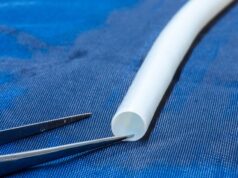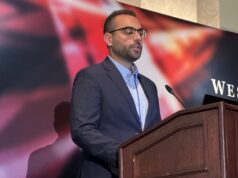
Thermocoagulation with a new endovenous radiofrequency system is a safe and efficient technique in the treatment of reflux of the great saphenous vein, according to a pilot study conducted in Belgium.
Thermocoagulation with EVRF (F Care Systems) is a treatment where energy is delivered in the vein causing a destruction of the endothelial cells and collapsing the vein. “Previous studies have demonstrated that this is efficient for treating small veins like telangiectasia. In this study, we would like to assess the efficacy in treating the great saphenous vein insufficiency,” wrote Sarah Thomis, Department of Vascular Surgery, UZ Leuven, Belgium, the study investigator.
Forty patients with a unilateral incompetence of the great saphenous vein were included in this prospective study between November 2011 and March 2012. The mean age was 50 years, 28 patients were females, the mean body mass index was 25.2 and 22 of the patients had a standing profession. The CEAP classification showed a predominance for C2 (34) varicose veins.
The study endpoints were occlusion rate at one and six months assessed with ultrasound, pain score, ecchymosis score, satisfaction score and quality of life score.
The 40 patients were treated under local, spinal or general anaesthesia. Preoperative mean diameter was 6.5mm. For the procedure, the patient was placed in an anti-trendelenburg position for the puncturing of the great saphenous vein at its lowest point of incompetence. A guidewire and a 6F sheath were introduced and the CR45i catheter was placed 1.5–2cm from the saphenofemoral junction. The patient was then placed in the trendelenburg position. Tumescent anaesthesia (approximately 10cc/cm) was delivered around the vein with ultrasound (according to the diameter of the vein, 25W or 20W was delivered). The catheter was then pulled back gradually. “Concomitant phlebectomies were performed in almost all cases, but were not performed around the great saphenous vein tract in the thigh,” Thomis noted.
The mean energy delivered was 7365.8J. The average treated vein length was 37.2cm.
After the treatment, a compression stocking class 2 was applied. No pain medication was prescribed, but if necessary ibuprofen or paracetamol could be taken. Low molecular weight heparin was only given in a prophylactic dose when a risk factor such as previous deep vein thrombosis or obesity was present.
The ecchymosis score was 0.02 at one week (maximum score 0.13). The pain score was measured using a VAS scale (0-10). This was 2.5 at day 2, 2.0 at day 5, 1.6 at day 7 and 0.6 at day 10. One patient had paraesthesia of the saphenous nerve, and there was a mean of 1.1 days of periphlebitis. The patient satisfaction score was 8.9 out of 10.
The quality of life questionnaire was filled in three times by the patients. The mean score was 35.2 preoperatively, 38.5 at seven days and 27 at one month.
At one month all veins were occluded with 34. At six months, 92.5% of the great saphenous veins were occluded with four veins showing a diameter reduction of more than 30%), 23 veins with a diameter reduction of more than 50% and 10 veins with only a fibrotic cord.
Thomis stated that the occlusion rate was 92.5%, “which is comparable with other endovenous treatments on the market.” She added, “Of the veins which did not occlude, one was still open and with reflux. This probably was a technical failure. The other two veins were only partially occluded, but not refluxing. We expect that after another six months these two veins will be occluded.”
The investigator said the complication rates were very low with one paraesthesia and 1.1 days of periphlebitis. There were no cases of deep vein thrombosis or thrombophlebitis. There was a very low ecchymosis score and a low pain score.
Thomis concluded that EVRF is a safe and efficient treatment for treating great saphenous vein incompetence with a low pain score, no ecchymosis, high quality of life and an occlusion rate of 92.5% at six months.












